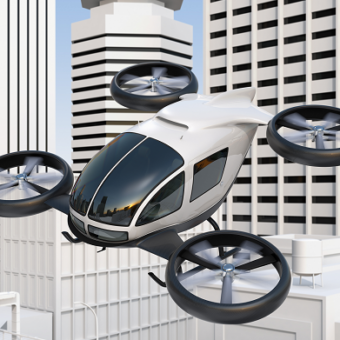For both swinging and sliding automatic gates, a limit switch is absolutely essential for gate safety and functionality. As part of an automatic gate’s control system, limit switches provide added safety and convenience through automation.
This intelligent design is the reason why an automatic gate won’t close while your car is in the way and why it begins opening automatically when a car approaches. It also allows the gate to properly close or open all the way and at the right time, without the need for a human operator.
How Does a Limit Switch Work?
A limit switch is a type of sensor that detects the absence or presence of an object; its position, speed and range of movement; or its end of travel. The electromechanical device consists of an actuator such as an arm, knob, lever, roller or plunger that is linked to a set of contacts. When an object comes into contact with the actuator, the device is signaled to make or break an electrical connection.
Thanks to their reliability, durability and ease of use, limit switches are employed in a wide variety of control systems ranging from household appliances to heavy-duty machinery.
For example, a limit switch is what makes the light turn on when you open the refrigerator door. It’s what lets the garage door opener know when the door is completely closed and stops the motor automatically. For swinging or sliding gates found in facilities such as office buildings, apartment complexes and parking garages, a limit switch automatically tells the gate when to open and when it’s fully closed, thus deactivating the motor.
Limit Switch Characteristics
There are some key considerations when reviewing the variety of benefits that limit switches offer. Due to their use in so many different applications, there are many specialized types of switches.
- Actuator type and actuator movement: Actuator type refers to the physical mechanism that, in response to motion, sends the electrical instruction to stop the machine. Actuator movement may be linear rotary multi-direction, linear multi-direction or just linear.
- Dimensions: Limit switches come in an array of sizes, allowing them to be installed wherever needed.
- Environmental requirements: The presence of dirt, oil, snow or other harsh conditions will affect the type of switch you need.
- Housing material: From plastic to aluminum to specialized metal that can withstand explosive or nuclear conditions, there is a housing material to suit your specific need.
- Electrical specs: The primary electrical consideration is current maximum, which determines how the limit switch is configured within the machine’s electrical system.
You will find two typical contact styles of limit switches, normally open (NO) and normally closed (NC). There are also specialized switches designed to work under extreme low/high temperatures and with varying mechanical life cycles. Part of the benefit of the limit switch’s intelligent design is its versatility.
Final Thoughts on Limit Switch Benefits
These relatively small components play a huge part in automatic gate efficiency, safety and affordability. They are very precise, require low amounts of electrical energy, and have a long life span. With such an intelligent automation system, you can service more people, faster, and with less associated cost and maintenance. Thus, they are a critical component to a wide variety of automatic gate applications in commercial and residential operations.
Discover more
All news
4 key challenges in implementing urban air mobility
By the end of 2025, it is estimated that there could be over 3,000 flying taxis…

Flight control : sidestick vs yoke
Traditionally, pilots use a control yoke in front of them to control the plane. An alternative…

The cockpit of the future : will they be fully digital?
It’s safe to say that the flight deck has undergone a significant transformation in recent years…

What is a turnstile?
A turnstile is a gate that controls or monitors pedestrian traffic flow. This important physical structure…